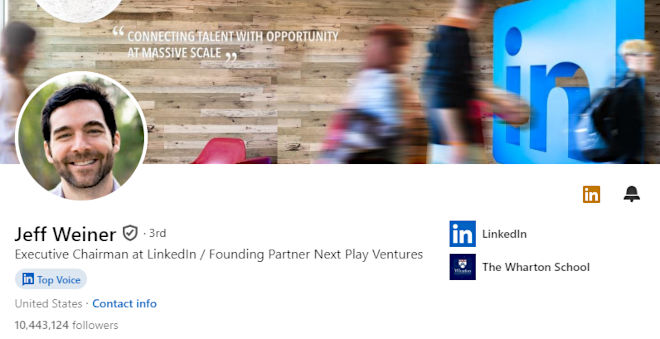Positioning oneself as a thought leader on LinkedIn can significantly influence your professional growth and create opportunities for influencing your industry. With LinkedIn’s dual focus on professional networking and knowledge sharing, it serves as the perfect platform for LinkedIn b2b marketing and those aiming to construct a persuasive personal brand and become influencers in their field. Developing into a thought leader on LinkedIn involves a strategic approach and dedication to contributing genuine value to your connections.
Insights Into LinkedIn’s Professional Network
Recognizing LinkedIn’s role in the professional world is crucial. Beyond acting as a digital curriculum vitae, LinkedIn is a bustling hub where professionals actively engage in exchanging insights, broadening their networks and discovering new professional paths. Understanding that LinkedIn users are inclined towards professional content sets the stage for a successful journey in influencing and establishing trust within this community.
LinkedIn’s role as a professional network extends beyond individual success. It serves as a global platform for industries to evolve, for innovative ideas to spread and for collective knowledge to grow. By actively participating in this dynamic ecosystem, you not only further your own career but also contribute to the advancement of your field. Recognizing the far-reaching impact of your engagement on LinkedIn is a key motivator for developing thought leadership.
Moreover, LinkedIn’s global reach offers unparalleled opportunities for cross-cultural learning and collaboration, meaning that it may be worthwhile making a few small changes to optimize your profile. By engaging with professionals from diverse backgrounds and industries, you can gain fresh perspectives, challenge your assumptions and develop a more inclusive approach to thought leadership. Embracing the diversity within LinkedIn’s network not only enriches your own knowledge, but also positions you as a leader who values and champions diverse viewpoints.
Optimizing Your LinkedIn Profile
The foundation of your personal branding on LinkedIn is your profile. A compelling bio that succinctly presents your expertise and professional vision can distinguish you from the crowd. It’s important to make a striking first impression on LinkedIn. This means having a professional photo, detailed account of your experiences, and receiving endorsements to bolster your profile’s attractiveness and credibility.
In addition to showcasing your expertise, your LinkedIn profile is an opportunity to tell your unique professional story. Weaving a compelling narrative throughout your profile—from your summary to your experience section—allows viewers to connect with your journey on a personal level. This storytelling approach humanizes your brand and makes your thought leadership more relatable and memorable.
Another crucial aspect of optimizing your LinkedIn profile is showcasing your thought leadership through featured content. LinkedIn allows you to highlight your best posts, articles or external publications directly on your profile. By curating a selection of your most impactful content, you provide visitors with immediate evidence of your expertise, thus building credibility, and encourage them to explore your insights further.
Mastering Content Creation
In the sphere of LinkedIn, impactful content reigns supreme. Crafting a LinkedIn content strategy that reflects your expertise and addresses your audience’s needs is essential. Thought leadership extends beyond showcasing your achievements; it involves sparking discussions, advocating for change and offering solutions to prevalent industry issues. Varying your content types and using different content formats—ranging from posts and articles to videos and Stories—can efficiently engage your audience.
When creating content for LinkedIn, it’s essential to strike a balance between showcasing your expertise and providing practical value to your audience. It is much more than providing the traditional influencer content, thought leadership content should not only inform readers, but also inspire and prompt action. By offering actionable insights, thought-provoking questions and fresh perspectives, you encourage your network to engage with your ideas and apply them in their own professional contexts.
[See related article: A Comprehensive Guide To Crafting A Highly Effective LinkedIn Content Marketing Strategy]
Enhancing Your Presence with LinkedIn Features
Your profile and content are just the beginning. LinkedIn offers numerous features that can broaden your reach. Engaging with LinkedIn groups affords the chance to join forces with professionals in similar fields or with shared interests. Active participation in these groups by contributing valuable content and engaging in conversations elevates your visibility and strengthens your standing as an industry voice, thus fostering professional development.
LinkedIn’s publishing platform is another powerful tool for establishing thought leadership. Publishing long-form articles on LinkedIn allows you to delve deeper into topics, showcase your writing skills and create evergreen content that continues to attract readers over time. By consistently publishing high-quality articles and promoting them to your network, you can establish yourself as a go-to resource in your industry.
Expanding and Engaging Your Network
Effective thought leadership is evaluated not by follower count, but by the depth of your interactions. Forming connections with other leaders and influencers, potential clients and colleagues creates an engaged community around your brand. Engaging your network with thoughtful messages, comments or shared insights keeps the conversation going and deepens interest in your perspective.
Building a strong network on LinkedIn also involves supporting and elevating others. Engaging with your connections’ content, sharing their posts and providing thoughtful comments not only boosts their visibility, but also demonstrates your commitment to fostering a supportive professional community. By lifting others up, you create a positive ripple effect that ultimately enhances your own reputation as a thought leader.
Monitoring Your Progress and Refining Your Strategy
Adjusting your methods based on feedback and outcomes is fundamental. LinkedIn’s analytics offer insights into your content’s performance, providing a metric for its impact and engagement. Focusing on what content type resonates with your audience lets you fine-tune your strategy. Remember, cultivating a reputation and achieving thought leadership is a long-term endeavor that demands perseverance, a learning mindset and flexibility in your approach.
In conclusion, rising to thought leadership on LinkedIn is a deliberate process that involves strategic planning, genuine interaction and a continuous effort to deliver value. By crafting a solid content strategy, participating actively in LinkedIn communities and nurturing your professional relationships, you elevate your personal brand. Sharing your insights and fostering dialogue, in turn, not only furthers your career but also contributes positively to your industry.
Seeking feedback from your network is another crucial aspect of refining your thought leadership strategy. Encourage your connections to share their thoughts, ask questions and provide constructive criticism on your content. By actively listening to your audience and incorporating their insights, you can ensure that your content remains relevant, valuable and aligned with their evolving needs and interests.
[Recommended reading: Secrets To Writing LinkedIn Posts That Bring Clicks]
[Image credits – Main Image by wydawca from Pixabay; other images, videos, infographics or screen prints are from their respective websites and/or social platforms or articles]



